Continue reading for our analysis...
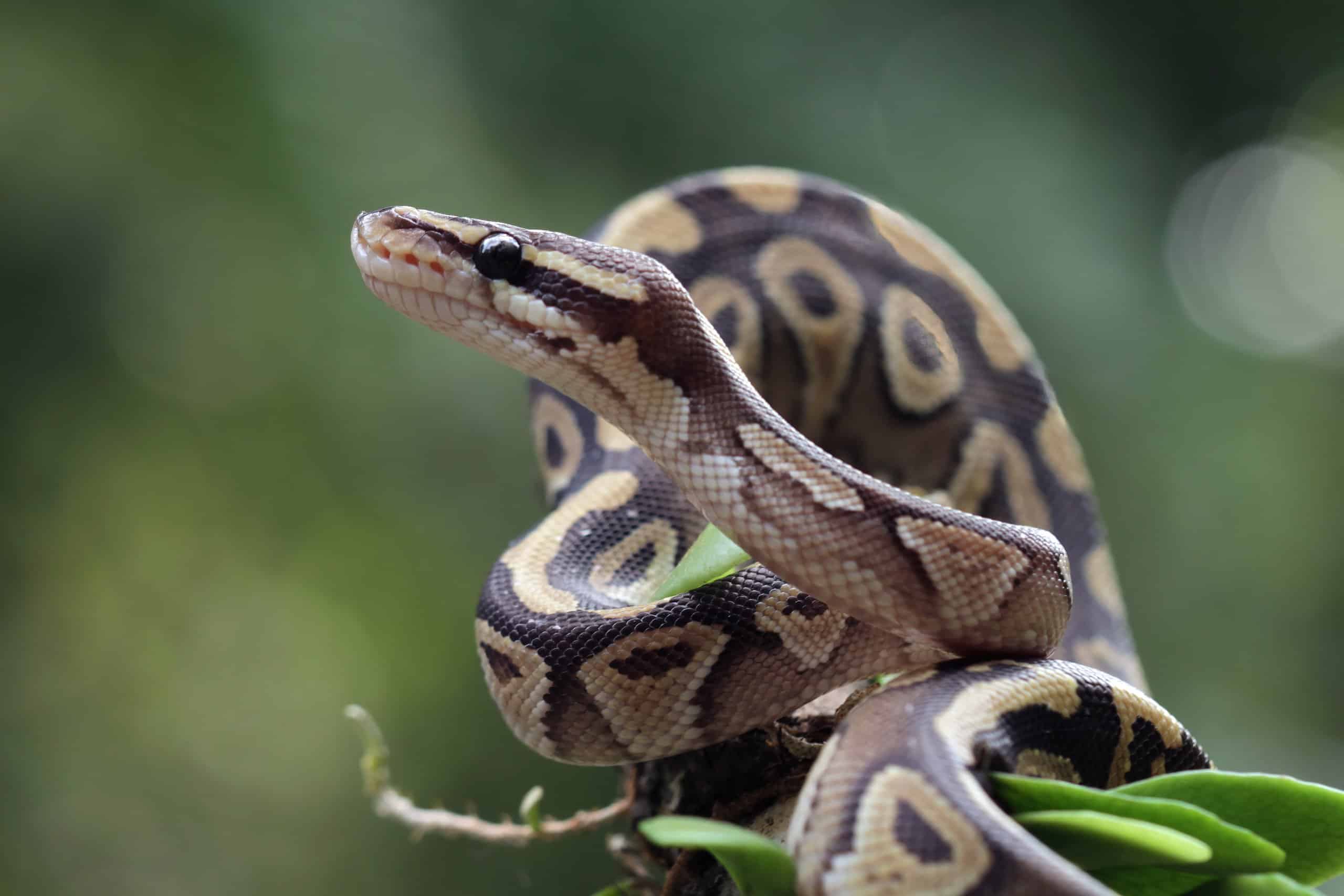
Key Points:
- Since pythons and Komodo dragons share the same habitat, the occasional clash is inevitable.
- It becomes all the more likely given the Komodo dragon’s fondness for the taste of snake eggs.
- The victor of each duel can be determined in part by the maturity of both opponents.
The fact that pythons remain with their eggs until they hatch, in contrast to many other snakes, is part of what makes them unique. Not only do they stay with them to keep them warm, but they’re also there to protect them from potential predators.
All of the eggs may not be laid for two or three hours. The eggs are frequently partially covered in the sand after being laid. Eggs begin to hatch within 52 to 60 days. Unfortunately, there are instances where the eggs are temporarily left alone. The compilation YouTube video below shows just how quickly Komodo dragons and monitor lizards can steal python eggs. Luckily for the serpents, the lizards aren’t often quick enough.
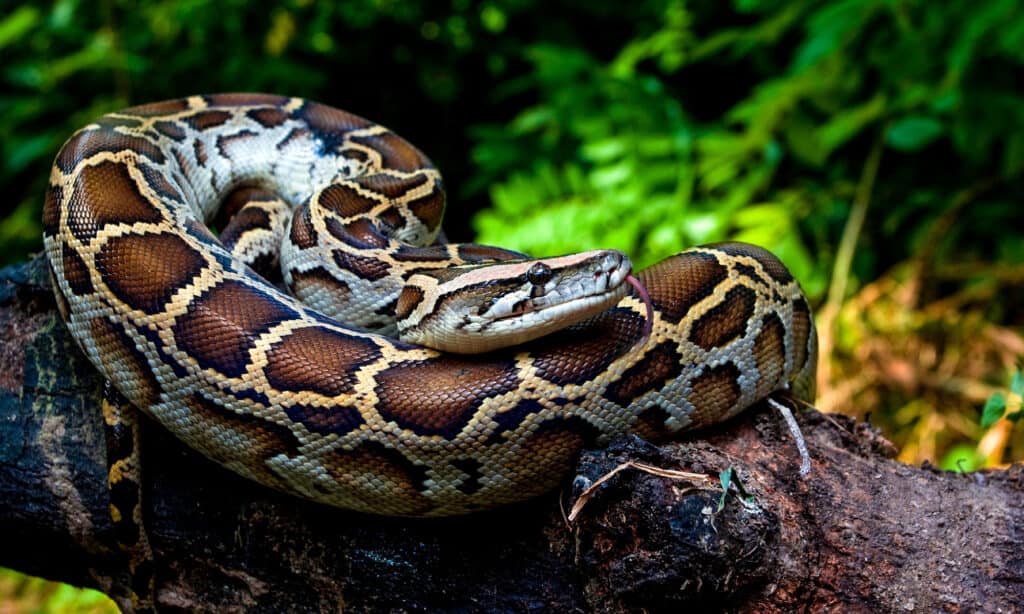
Python eggs make a rather high-risk source of sustenance as pythons tends to guard their eggs.
©dwi putra stock/Shutterstock.com
Do Komodo Dragons Normally Eat Eggs?
Birds and their eggs are eaten by Komodo dragons. They also consume other small animals, including pigs, goats, wild boars, and monkeys. In addition to deer and horses, a Komodo dragon’s diet also includes water buffalo.
Additionally, Komodo dragons consume animals like sheep and cattle, as well as snakes. A mature Komodo dragon will occasionally attack a person. However, it is uncommon. Monitor lizards will eat snake eggs whole and stick to a mostly carnivorous diet.
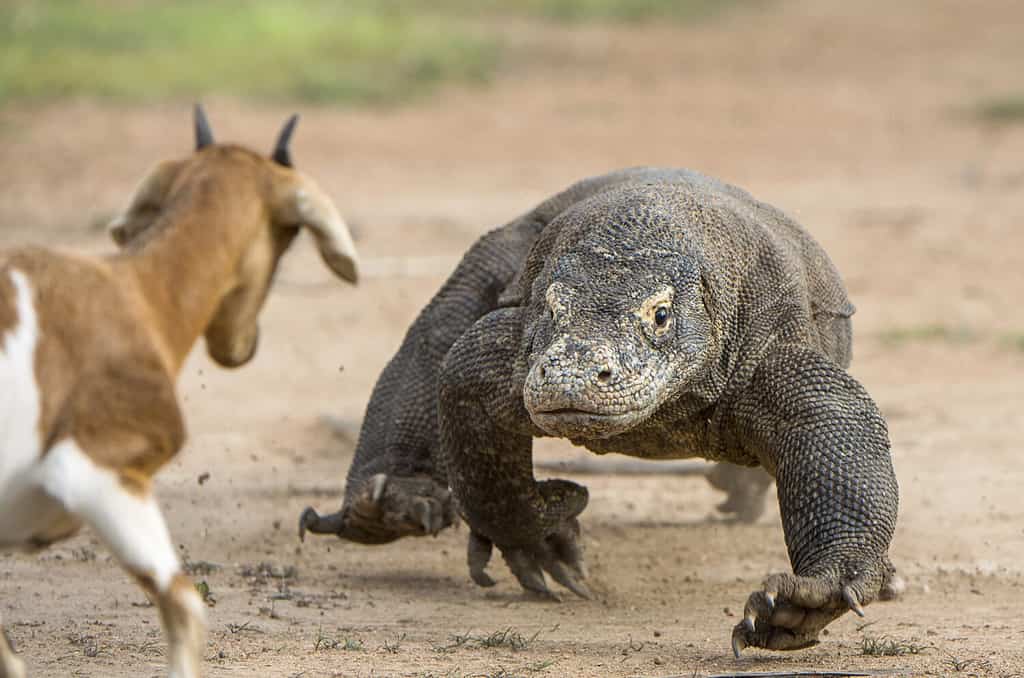
Komodo dragons enjoy a varied diet, including birds, boars, and deer. They are also fond of snake eggs.
©Sergey Uryadnikov/Shutterstock.com
How Do Pythons Kill Their Prey?
Constrictor snakes, including pythons and boa constrictors, are well known for killing by squeezing their victims. But how exactly does the prey pass away? These and additional constrictors can exert pressures that are far greater than their target’s blood pressure, indicating that they may be able to cease circulation and maybe quickly kill animals by overpressurizing the brain and interfering with neurological function. You can find the wildly interesting compilation featuring pythons and lizards at the top of the page!
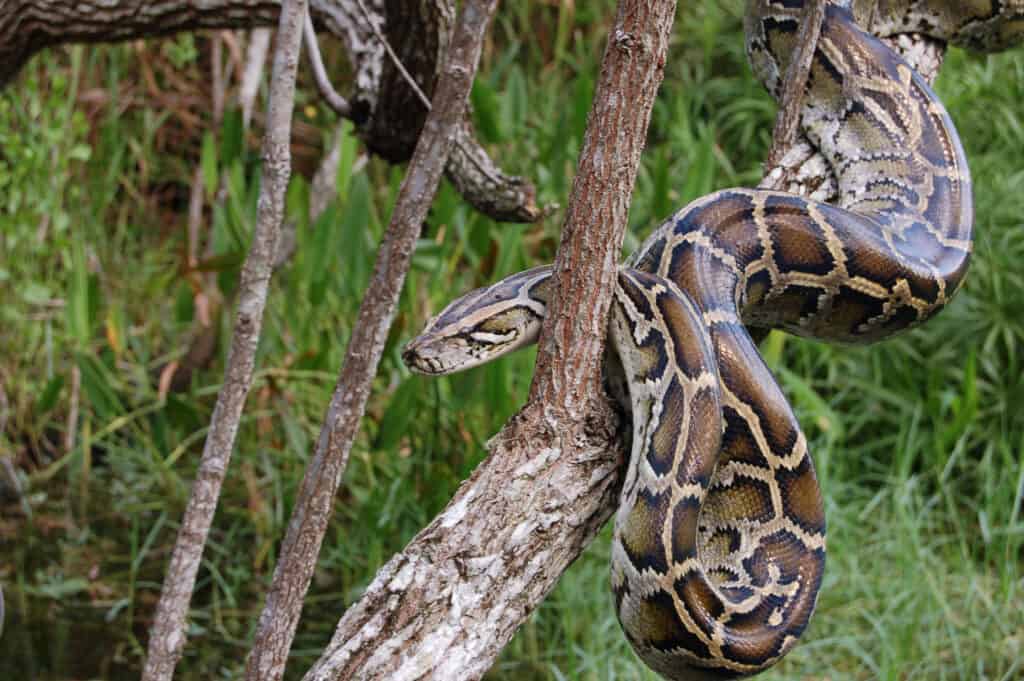
Pythons such as the
Burmese
python kill prey by exerting pressure far greater than their target’s blood pressure.
©Heiko Kiera/Shutterstock.com
Do Pythons Normally Confront Komodo Dragons?
Reticulated pythons and Komodo dragons are both native to Southeast Asia, so it is possible for the two species to encounter one another in the wild. The carnivorous Komodo dragon is considered an apex predator, which means that it is generally not hunted as prey by anything else in its habitat. But, as shown here, sometimes the prey this extra-large lizard chooses is well-guarded. The first clip in this video is not the only account of hostility between these two species. Pythons and Komodo dragons are both considered formidable opponents. It has been suggested that the advantage may simply go to whichever of the two combatants is more physically mature. Some Komodo dragons are capable of taking down cattle and water buffalo! It is possible that if this python’s adversary had been larger, a different outcome may have resulted.
Are Komodo Dragons Venomous?
Komodo dragons, or Komodo monitors, are the largest and heaviest lizards in the world — reaching an impressive length of up to 9 feet. They inhabit various islands throughout Indonesia and have a powerful bite that is venomous. These stealthy hunters use their sense of smell to detect food from afar, easily picking up on subtle scents with their long forked tongues, which they flick out into the air to sample it. Their sharp teeth help them catch prey, such as small deer and pigs, while their claws allow them to climb trees in search of eggs or other sources of nutrition. When threatened, these fierce lizards can move quickly through dense vegetation using their strong legs, making them formidable predators in their environment.
Komodo dragons carry a venomous bite that has been known to cause fatalities in humans. It is believed that their venom works by preventing blood clotting and can lead to shock, severe blood loss, and eventually death if left untreated. In addition to the potentially fatal effects of their venom, Komodo dragons have sharp teeth and claws, which can leave deep wounds with intense pain. The fear of these large reptiles is deeply rooted in Indonesian culture due to several documented deaths caused by them. Even though the possibility of being attacked or killed by one is rare, locals still consider them dangerous creatures worthy of respect.
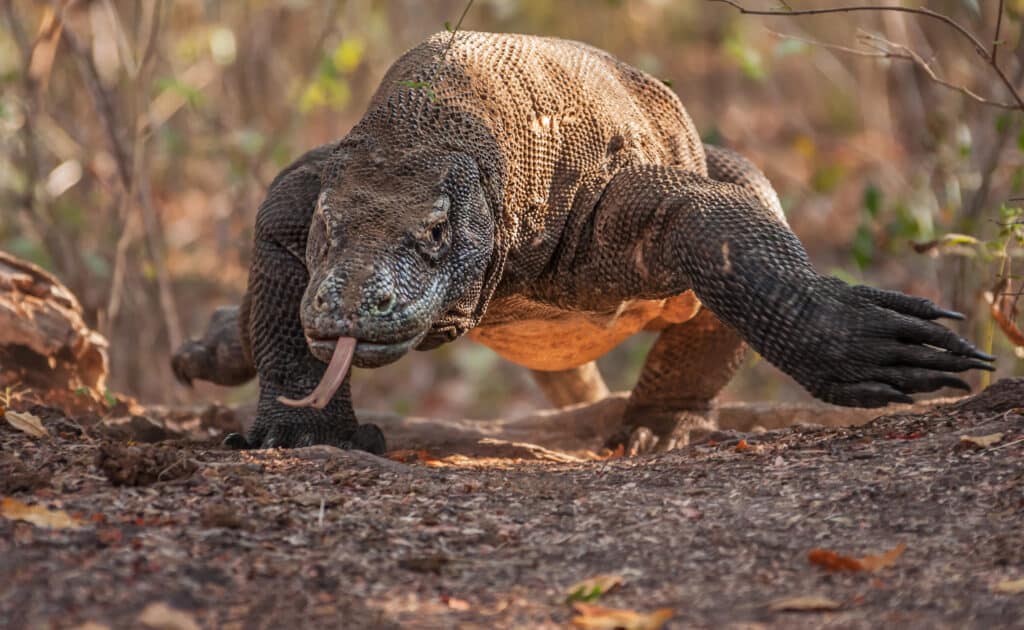
Komodo dragons have a venomous bite that has been known to cause fatalities in humans.
©iStock.com/kiwisoul
A Python Seen Dead Wrapping a Komodo Dragon
The first part of the video below showcases a Komodo dragon attempting to steal a python egg. Pythons are among the biggest snakes on the planet. These large, non-venomous snakes can grow to a length of 26 feet and a weight that exceeds 200 pounds. On open land, these snakes can only move at a speed of roughly one mile per hour.
However, they don’t actually need to move swiftly since they don’t have to rush after their food. In the video compilation below, you’ll see pythons moving toward their prey. Though a mile an hour doesn’t seem fast, they quickly attack without a moment for the lizard to escape.
It doesn’t take the python long before it’s wrapped around the Komodo dragon’s back leg and tightens itself around the rest of the body. Several clips follow, showcasing monitor lizards attempting a quick lunch of python eggs. Little do they know, it’s the last thing they’ll ever eat.
Discover the "Monster" Snake 5X Bigger than an Anaconda
Every day A-Z Animals sends out some of the most incredible facts in the world from our free newsletter. Want to discover the 10 most beautiful snakes in the world, a "snake island" where you're never more than 3 feet from danger, or a "monster" snake 5X larger than an anaconda? Then sign up right now and you'll start receiving our daily newsletter absolutely free.
Thank you for reading! Have some feedback for us? Contact the AZ Animals editorial team.






